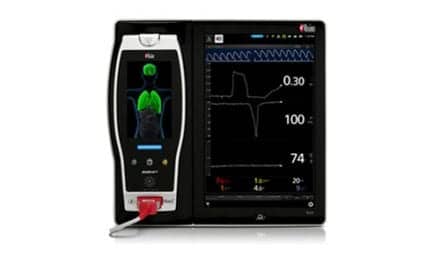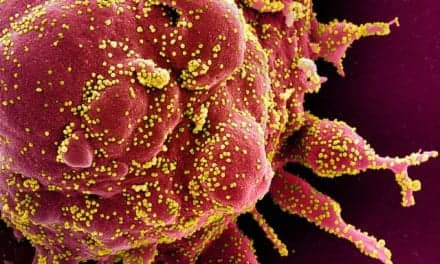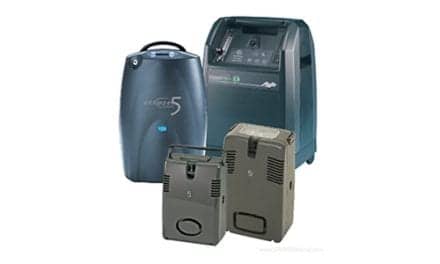Arterial blood-gas analysis is underutilized in many settings, yet it can tell volumes about patients’ conditions.
Arterial blood-gas (ABG) analysis is one of the most basic tests of pulmonary function. Performed routinely on hospital inpatient floors and in intensive care units, pulmonary clinics, emergency departments, surgical suites, and pulmonary function laboratories throughout the world, blood-gas analyses provide valuable information. Blood-gas analysis is the diagnostic test that best reveals the function of the lungs in supplying oxygen and removing carbon dioxide. ABG analysis can be thought of as a window through which ventilation, respiration, metabolism, and acid-base balance can be examined.
RTs see the need for (and understand the value of) blood-gas analysis in all populations. Regardless of the age, sex, or disorder of the patient, blood-gas results are valuable in establishing a baseline to guide therapeutic intervention. As the patient population changes, blood-gas testing may become even more crucial to expedient, accurate diagnoses.
Demographic Trends
A unique point in the history of the United States is approaching. Starting in the year 2011, about 10,000 members of the Baby Boom generation will reach age 65 each day. Although these individuals constitute a healthier cohort than preceding generations of the elderly, increased age is often associated with chronic disease and multiple comorbidities. Accompanying the swelling numbers of elderly will be a dwindling supply of health care professionals. A recent report1 on the US health care workforce suggests that conditions are ripe for what might be called a perfect storm: the convergence of greater needs among geriatric patients and the proportional decline of available health care workers.
Age also affects the utilization of various health care services. For a variety of reasons, the elderly rely on emergency departments to meet their health care needs. The highest rate of emergency-department use is among those aged 75 and older. General-population visits to the emergency department average 30 per 100 people overall, while visits in the population over 75 average 60 per 100 people.2 Although recent data are conflicting, the general trend is that emergency-department use is up 20% and the number of emergency departments is down 15%.2 While these trends might suggest that health care workers will simply have to work harder, a more reasonable, realistic approach would be for health care providers to work smarter, which calls for more attention to ABG testing.
Underutilization of ABGs
Patients with pulmonary disease, regardless of age or diagnosis, usually have some measure of impaired ventilation or perfusion. A simple, noninvasive way to check a patient’s pulmonary status quickly is to use a pulse oximeter; however, oximeters provide only one piece of information (the patient’s oxygenation status). If the patient has an acid-base abnormality that is undiagnosed and/or untreated, emergency care will be suboptimal. A 2003 prospective cohort study3 conducted at 29 emergency departments in 15 US states and three Canadian provinces looked at the management of acute exacerbations of asthma and chronic obstructive pulmonary disease (COPD) in the elderly. The study enrolled 397 patients with an average age of 70 years. Only 31% of these patients were evaluated using spirometry; 48% were evaluated using blood-gas analysis. The authors pointed out that at least five published guidelines list spirometry and blood-gas testing as necessary components of the evaluation of asthma or COPD patients.
Nonpulmonary Diagnoses
Abnormal ventilation can be the result of many nonpulmonary conditions in the elderly. Inadvertent prescription drug overdose, overuse of prescription narcotics, overdosing with over-the-counter drugs, and mixing sleeping pills with alcohol are some of the common medication-mismanagement issues seen in the home-dwelling elderly. All of these can lead to reduced ventilation, which will affect the patient’s acid-base balance. Hypothermia in the elderly may be a consequence of age-related changes in the hypothalamus that affect the body’s thermoregulatory mechanism. Lower body temperatures can result in bradypnea, reduced ventilation, and hypercarbia. Assessment of the patient’s blood-gas levels may lead to more rapid diagnosis and better treatment.
Abnormal respiration or gas exchange in the elderly is not always associated with an irregularity of the parenchyma. Pulmonary edema resulting from congestive heart failure, reduced cardiac output, atelectasis, anemia, or pulmonary embolism may reduce effective respiration. Masotti et al4 performed a retrospective cohort observational study over 6 years in a 60-bed acute geriatric ward to evaluate blood-gas parameters. The subjects were elderly patients with suspected pulmonary embolism. The authors found that hypoxemia and an increased alveolar-arterial difference in partial pressure of oxygen had a high sensitivity and low specificity in diagnosing elderly patients with pulmonary embolism.4 Because blood-gas analysis is a relatively quick way to assess gas exchange and acid-base status, more studies such as this are needed in elderly patients.
An abnormal acid-base balance can be caused by many diseases and disorders common to the elderly. Metabolic acidosis in an older patient who presents to the emergency department may be a consequence of a severely compromised liver, ketoacidosis caused by poor nutrition or starvation, diabetes, renal failure, or ingestion of a toxin. The most likely toxic culprit in older patients is an accidental overdose of aspirin (salicylic acid). Aspirin is relatively inexpensive; widely available over the counter; and often prescribed for arthritis, headache, and gout. Patients with chronic, stable angina or previous cardiovascular events are also commonly given aspirin therapy. Although not as pervasive as once thought, the idea that if two pills are good, four would be better still exists concerning medications in this population. Accidental overdosing may also occur due to forgetfulness and inadvertent double dosing. Once a diagnosis of metabolic acidosis has been established by blood-gas analysis, the patient’s biochemical profile should be evaluated. Having electrolyte values at hand will allow RTs to calculate an anion gap quickly. Understanding the causes of high–anion-gap acidosis versus normal–anion-gap acidosis will narrow the likely diagnoses and facilitate more rapid therapeutic intervention.
Metabolic alkalosis can also be a consequence of disorders more common among older patients. Vomiting, for example, can lead to loss of hydrochloric acid. Because the elderly have a diminished sense of thirst, they can also become dehydrated and/or volume depleted. Any condition that results in loss of fluids and volume contraction may lower serum potassium and lead to alkalosis.5 Again, rapid diagnosis of any existing abnormalities in blood-gas values can save time in correctly diagnosing and treating the problem.
Point-of-care Testing
In the emergency department, where expedient care is imperative, point-of-care blood-gas testing has been available for many years. The fundamental goals of point-of-care testing are to improve medical and economic outcomes, achieve a rapid response, increase physician efficiency, and shorten patient care time.6 These goals are in keeping with the philosophy of working smarter, not harder. In addition to the obvious need for blood-gas and pH analysis in the emergency department when the elderly patient has COPD or asthma, other diagnostic protocols that would benefit from point-of-care testing are those for pulmonary embolism, trauma, toxin ingestion, acute renal failure, bowel ischemia or sepsis, diabetic ketoacidosis, and respiratory failure.
The elderly are often high-risk patients. They are more likely to have age-related diseases and diagnoses, both pulmonary and nonpulmonary. The incidence of chronic disorders increases with advanced age. An age-associated blunting of the immune system puts older patients at higher risk for infectious processes, as well. Because the elderly have an altered thermoregulatory mechanism, they are less likely to mount a febrile response to disease, further complicating diagnostic efforts. Equally important for RTs to understand is that older individuals have an altered chemoreceptor response to hypoxemia and hypercapnia. A decreased neural output to respiratory muscles and diminished chest-wall and lung-mechanical efficiency, even in the absence of disease, alter the chemoreceptor response. The ventilatory response to hypoxia is reduced 51% and the ventilatory response to hypercapnia is reduced 41% in healthy men 64 to 73 years old, as compared with healthy men aged 22 to 30 years.7 This decreased response may be manifested as a reduction in symptoms, which may be interpreted incorrectly as lack of pathology.
Interpretation of Results
Once the blood-gas test has been ordered and analyzed, the results must be interpreted correctly to have any value. Establishing reference ranges for ABGs in the elderly has proved challenging. Many of the elderly have smoked at some time; have multiple, chronic comorbidities; take multiple drugs; and have widely varying activity levels. The reference studies done in the late 1960s tested a numerically limited group of subjects, very few of them older than 65 years. To generate reference ranges, data were extrapolated. This led to prediction-table values for the elderly that did not always correlate with survival. For years, RTs have relied on the 70-70 rule to guide their understanding of normal values. This rule basically states that starting with a Pao2 of 100 mm Hg at age 10 and subtracting 5 mm Hg for each decade after that yields an approximately normal age-adjusted value (for example, a Pao2 of 70 mm Hg at age 70). Extended, this would imply that 65 mm Hg for an 80-year-old patient and a 60 mm Hg for a 90-year-old patient would be acceptable. Newer studies7,8 soundly contradict the 70-70 rule; Pao2 clearly declines up to about age 75 and then tends to rise. After that, the Pao2 of healthy nonsmokers remains stable at about 83 mm Hg. Research9 also indicates that there is a difference of roughly 5 mm Hg in Pao2 values depending on whether the patient is seated or supine when the samples are drawn. After age 75, Pao2 differences also tend to be more gender related than age related, with males having higher levels.10 There seem to be no age-associated changes in values for pH and Paco2. The acid-base components of blood gases are stable.
Conclusion
The elderly patient population is expanding at a record pace and will continue to do so for at least another decade. The number of health care providers available is not expanding at the same rate. To provide high-quality care and strive for better patient outcomes, RTs need to work smarter, not harder. One way of assisting physicians in making diagnoses more rapidly is the use of appropriately ordered and interpreted blood-gas tests. It is necessary to include both pulmonary and nonpulmonary diseases as indications for blood-gas analysis in the effort to arrive at expedient, accurate diagnoses.
Helen M. Sorenson, RRT, CPFT, is assistant professor, Department of Respiratory Care, University of Texas Health Science Center at San Antonio.
References
1. Miles T, Furino A, eds. Aging public health workforce issues. Annual Review of Gerontology and Geriatrics. New York: Springer Publishing Co; 2005:1-320.
2. McCaig LF, Burt CW. National hospital ambulatory medical care survey: 2001 emergency department summary. Advance Data from Vital and Health Statistics No. 335. Hyattsville, Md: National Center for Health Statistics; 2003.
3. Cydulka RK, Rowe BH, Clark S, Emerman CL, Camargo CA Jr; MARC Investigators. Emergency department management of acute exacerbations of COPD in the elderly. J Am Geriatr Soc. 2003;51(17):1038-9.
4. Masotti L, Ceccarelli E, Cappelli R, Barabesi L, Forconi S. Arterial blood gas analysis and alveolar-arterial oxygen gradient in diagnosis and prognosis of elderly patients with suspected pulmonary embolism. J Gerontol A Biol Sci Med Sci. 2000;55:M761-M764.
5. Malley WJ. Clinical Blood Gases: Assessment and Intervention. 2nd ed. St Louis: Elsevier Saunders; 2005:252.
6. Kost GJ. Principles and Practices of Point of Care Testing. Philadelphia: Lippincott, Williams & Wilkins; 2002.
7. Merck Manual of Geriatrics. Aging and the lungs. Available at: http://www.merck.com/mrkshared/mmg/sec10/ch75/ch75a.jsp. Accessed January 8, 2006.
8. Cerveri I, Zoia MC, Fanfulla F, et al. Reference values of arterial oxygen tension in the middle-aged and elderly. Am J Respir Crit Care Med. 1995;152:934-41.
9. Hardie JA, Mørkve O, Ellingsen I. Effect of body position on arterial oxygen tensions in the elderly. Respiration. 2002;69:123-8.
10. Hardie JA, Vollmer WM, Buist S, Ellingsen I, Morkve O. Reference values for arterial gases in the elderly. Chest. 2004;125:2053-60.









